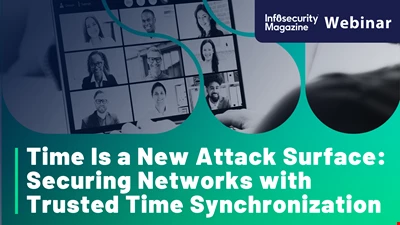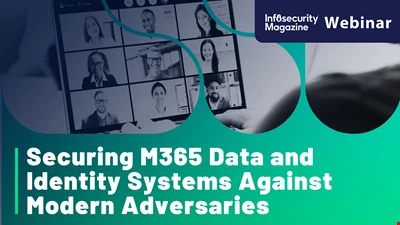Infosecurity News

TamperedChef Malvertising Campaign Drops Malware via Fake PDF Manuals
TamperedChef creates backdoors and steals user credentials – particularly in organizations reliant on technical equipment

Account Compromise Surged 389% in 2025, Says eSentire
An eSentire report showed credential theft accounted for 74% of all observed cyber threats in 2025

RondoDox Botnet Targets HPE OneView Vulnerability in Exploitation Wave
Check Point Research has reported a surge in attacks on a vulnerability in HPE OneView, driven by the Linux-based RondoDox botnet

Global Agencies Release New Guidance to Secure Industrial Networks
CISA, NCSC and the FBI have released a new security guide to enhance protection for OT environments

Hackers Increasingly Shun Encryption in Favour of Pure Data Theft and Extortion
While ‘traditional’ ransomware attacks remain stable, some gangs are shifting towards exploiting zero-days and supply chains to go straight to stealing data

CodeBuild Flaw Put AWS Console Supply Chain At Risk
A critical AWS CodeBuild misconfiguration has exposed core repositories to potential attack

Cyber Threat Actors Ramp Up Attacks on Industrial Environments
Hacktivists and cybercriminals have intensified their efforts to exploit vulnerabilities in industrial systems, according to a Cyble report

CISO Role Reaches “Inflexion Point” With Executive-Level Titles
IANS Research reveals a growth in executive-level CISO titles, amid resource challenges

Data Privacy Teams Face Staffing Shortages and Budget Constraints, ISACA Warns
ISACA’s State of Privacy 2026 report reveals that data privacy teams remain understaffed and underfunded, despite growing regulatory demands and rising technical privacy challenges

ICE Agent Doxxing Site DDoS-ed Via Russian Servers
DDoS-ers are striking a website linked to a data breach at the Department of Homeland Security

Criminal Subscription Service Behind AI-Powered Cyber-Attacks Taken Out By Microsoft
RedVDS cyber-crime-as-a-service platform powering phishing, BEC attacks and other fraud has cost victims millions

Hackers Use Fake PayPal Notices to Steal Credentials, Deploy RMMs
Phishing attacks have been identified using fake PayPal alerts to exploit remote monitoring and management tools

DeadLock Ransomware Uses Polygon Smart Contracts For Proxy Rotation
A new DeadLock ransomware operation uses Polygon blockchain smart contracts to manage proxy server addresses

G7 Sets 2034 Deadline for Finance to Adopt Quantum-Safe Systems
The financial sector should finalize its post-quantum cryptography transition circa 2034, G7 cyber experts said

Microsoft Fixes Three Zero-Days on Busy Patch Tuesday
Microsoft has patched three zero-day vulnerabilities in the first patch Tuesday of 2026, including one under active exploitation

Impersonation Fraud Drives Record $17bn in Crypto Losses
Chainalysis estimates $17bn will be lost to crypto scams in 2025 as AI takes hold

CISA Flags Actively Exploited Gogs Vulnerability With No Patch
A high-severity security flaw in the Gogs Git service is being actively exploited, leading to remote code execution

SHADOW#REACTOR Campaign Uses Text-Only Staging to Deploy Remcos RAT
SHADOW#REACTOR is a multi-stage Windows malware campaign that stealthily deploys the Remcos RAT using complex infection techniques

Phishing Scams Exploit Browser-in-the-Browser Attacks to Steal Facebook Passwords
Cybersecurity researchers issue warning over a surge in attacks designed to trick Facebook users into handing over login credentials

New Chinese-Made Malware Framework Targets Linux-Based Cloud Environments
Detected by Check Point researchers, VoidLink is a sophisticated malware framework that can be used to implant malware in the most common cloud environments



